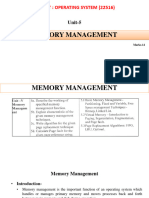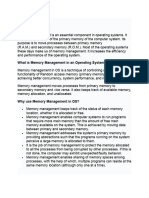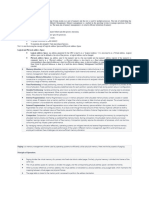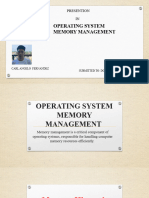0% found this document useful (0 votes)
6 views2 pagesOS Memory Management Easy Notes
The document outlines key concepts of memory management in operating systems, including basic structures like bare machines and resident monitors, as well as techniques such as fixed and variable partitioning, paging, and segmentation. It discusses the importance of protection schemes, virtual memory, demand paging, and page replacement algorithms, while also addressing issues like thrashing and the role of cache memory. Additionally, it highlights the principle of locality of reference to enhance performance through efficient memory use.
Uploaded by
prashantttttt14Copyright
© © All Rights Reserved
We take content rights seriously. If you suspect this is your content, claim it here.
Available Formats
Download as PDF, TXT or read online on Scribd
0% found this document useful (0 votes)
6 views2 pagesOS Memory Management Easy Notes
The document outlines key concepts of memory management in operating systems, including basic structures like bare machines and resident monitors, as well as techniques such as fixed and variable partitioning, paging, and segmentation. It discusses the importance of protection schemes, virtual memory, demand paging, and page replacement algorithms, while also addressing issues like thrashing and the role of cache memory. Additionally, it highlights the principle of locality of reference to enhance performance through efficient memory use.
Uploaded by
prashantttttt14Copyright
© © All Rights Reserved
We take content rights seriously. If you suspect this is your content, claim it here.
Available Formats
Download as PDF, TXT or read online on Scribd
/ 2


























































